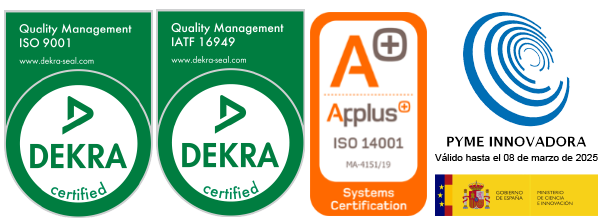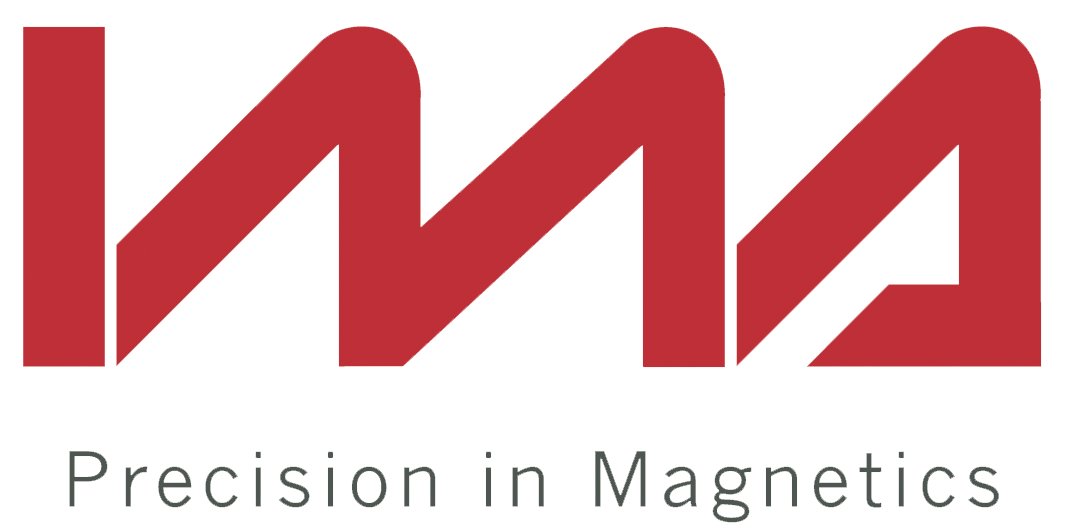The Hall effect probe for gaussmeter, origin and application
When we talk about the Hall effect probe, we first need to
clarify some terms. First of all, its origin, which bears the name of its
inventor Edwin Herbert Hall since its discovery in 1879. As we have already
explained elsewhere in our blog, we often talk about Lorentz’s strength in the
field of magnetism. If a magnetic field forms around an electric field,
unfortunately, the field lines of these two fields will condense if they extend
in the same direction. If, on the contrary, these field lines work in the
opposite direction, they will weaken. The force reached at this stage is the
Lorentz force.
If this force acts directly on the electrons of a conductor,
which carries current, connected with a printed circuit board, we generate what
is called the load offset. This means that there is a shortage on one side and
an excess of electrons on the other. This combination ultimately creates an
electric field called Hall effect.
From the Hall effect to the Hall probe
We now come to the Hall effect probe for gaussmeter. The combination of printed circuit boards, control circuit and magnetic field is called the Hall generator. If the integrated circuit remains constant here, we are talking about the Hall probe, with which the magnetic fields can be measured. The intensity of these magnetic fields is generally measured in amperes per meter or in Tesla. There is also the Oersted unit of measure, but it is no longer used. However, the most common way to look at magnetic flux density these days is Tesla, which can also be measured with the Hall effect sensor.
As already mentioned above, the electrons are pushed
vertically out of their original direction of movement by the conductive plate,
so that they are also located on one side of the plate. The resulting electric
voltage is proportional to the magnetic field, the strength of which we still
do not know. If we now use the Hall voltage across the conductor, we can
calculate the electric forces which are equal to the Lorentz force and
therefore the force of the magnetic field.
If you have more questions about the Hall Effect Gaussmeter
or other topics in this field, we recommend that you read the other articles on
our blog or contact our team of experts.
How to create Eddy currents?
Eddy currents are also known as “Foucault current” in English. These are electrical currents which, using an Eddy current separator, form a variation over time, cutting even the smallest non-ferrous metals.
First, let's clarify how it works. For this we must look more closely at the principle and the functioning of the Eddy currents. These are different electric currents that are created inside a so-called conductive mass. They can be created in two different ways: either through the displacement of the conductive mass inside a magnetic field. Either with the help of an external magnetic flux which induces a variation over time.
The result of these variations is the creation of vortices if the magnetic field is constant over time but spatially inhomogeneous and the conductive mass moves. The current name for the Eddy currents was chosen because the current Eddy lines are independent and look like vortices.
These vortices create a magnetic field, which can use high frequencies to move the current from the center of our conductor. If you add an electrical resistance, it becomes hot because of this effect. Using Maxwell's equations, the active forces in this scenario and the exact current distribution can be calculated. We have already talked about Maxwell's equations before in our blog.
To form an Eddy separator, you need a chain conveyor system and a magnetic rotor that is attached to the end of the conveyor belt and operates at high speed. In this way, an induction field can be created, which in turn produces a rapidly changing magnetic field. All electrically conductive particles, which are guided on this conveyor belt system, are briefly magnetized by the magnetic field and, therefore, are "cut" and sorted automatically. Non-ferrous metals, such as aluminum, brass or copper, can be separated from the rest. In general, materials with a lower density and good electrical conductivity can be cut better with stray currents.
Where is an Eddy separator used?
Non-ferrous rotary burs are used in many industrial sectors.
For example, in the glass recycling industry, where stray currents eliminate
aluminum closures. In wood production, brass handles and hinges are classified
directly in the electronic and household waste treatment section.
Depending on the use we want to make, the basic model of the Eddy separator can be improved with additional parts. For example, you can add a separation container or a partition. It depends on the needs.
If you have any questions about the non-ferrous rotary burr or if you are interested in other products from our store, you can contact us at any time and without any commitment.
What does the Oersted unit mean?
The Oersted unit is named after the Danish physicist and
chemist Hans Christian Oersted. In 1820, he discovered the link between
electric current and magnetism, although the latter had already been
established before him, without going into detail or going into details.
Almost 40 years later, Maxwell clarified these relationships in Maxwell's equations, which still apply today as the basis of electromagnetism. The Oersted unit, on the other hand, has long been used as a unit in the CGS system of units for measuring magnetic fields, but it has not been an official unit since January 1, 1978. It has been replaced by amperes per meter.
The CGS unit system is also not used frequently. It was
introduced in 1874 as a system of physical units, but was replaced in 1889 by
the so-called MKS system of units. It is based on the units of meters,
kilograms and seconds, which can also be displayed in centimeters, grams and
seconds. In addition, there are the amperes for current, Kelvin for temperature
and others.
How was the Oersted unit discovered?
Oersted's discovery of the connection between magnetism and
electronics means as much as Maxwell's formulation. Oersted discovered this
connection through a very simple experience.
Oersted noted that the compass needle, which is always
oriented in the direction of our Earth's magnetic field and therefore points
north, can be influenced by an external energy source. If you bring the compass
parallel to a conductor cable and turn on the power, the compass needle aligns
horizontally with the conductor and returns to its source as soon as the power
is turned off.
From there, Oersted concluded that the energy source is
surrounded by a magnetic field, which influences the compass.
In general, magnetic fields which are abbreviated as
"H" are no longer measured in Oersted, but can still be converted to
amps / meters. In this case, Oe means Oersted and A / m for amperes per meter.
Therefore:
If you have more questions about magnetism or want more
information about our products, you can always contact our specialist staff or
take a look at our store.
Which is the magnetic moment?
When we talk about the magnetic moment, we talk about a unit
or a vector, which describes magnetic processes. More specifically, it
indicates the strength of a magnetic dipole, which represents the relationship
between the external magnetic field and the strength of that field itself.
The external magnetic field, together with its flux density, can affect the it and rotate it in the direction of the field. The angle between the direction of the field and the magnetic moment, therefore, influences the energy. This can be observed in classic compasses or electric motors.
How is the magnetic moment created?
Generally there can be two origins for the creation of the
magnetic moment. The first one is with an electric and / or circular current
with the current density distribution and, on the other one is with particles
with their own angular momentum, the so-called spins.
What is the magnetic moment?
A magnetic moment can arise in a closed current path that, as already mentioned at the beginning, depends on the direction of the current. This is used in electrical engineering as a basis for electromagnets, motors or generators.
The same logic applies if everything is transferred to atoms. As we explained earlier, atomic nucleus are surrounded by circles of electron movement. These electrons have the so-called spin, that is, an auto rotation of the electrons. Its circular course around the atom can be equated with the circular current. Each movement is a magnetic dipole moment, which together describes the full magnetic force, that is, the magnetic moment. But its form can also be canceled. If the atoms have an even number of electrons, it will be canceled alone.
Described by a formula, as follows: = ⋅ . m represents the magnetic moment, I for the current and A for the area of the circle.
If you have more questions about the subject or our magnetic
products from our store, you can contact our team of experts at any time
without obligation. We will be happy to help you and provide you with
information.
What is electromagnetism?
Electromagnetism is exactly what the term describes, a magnetic effect that is the result of electric currents. Everything is defined as it follows:
All phenomenons in which electric currents and magnetic
fields are linked.
In the following article, however, we would like to take a
closer look at electromagnetism to explain what exactly happens in this
phenomenon on a physical level. In this case we talk about electrodynamics,
which can be used to describe numerous phenomenons in our environment.
Danish physicist and chemist Hans Christian Oersted was the
first to discover and record the electromagnetic principle in 1820. Before,
electrical and magnetic forces were often exchanged or not even distinguished.
However, this is not the case.
Oersted has determined that when a conductor is crossed by
electricity, it automatically creates a magnetic field around it. The intensity
of this magnetic field depends on the intensity of the current flow supplied.
The polarization of this magnetic field also depends on the current flow, more
precisely on the direction of the current flow. Consequently, this can also be
controlled: if the direction of the current flow is reversed, the polarization
of the electromagnetic field is also reversed.
Electromagnetism and Maxwell's equations
Just under 40 years later, James Clerk Maxwell further deepened this principle. He established Maxwell's equations, which still form the basis of electrodynamics and describe how electromagnetic fields are formed. In summary, from these four mathematical equations it can be concluded that the so-called electromagnetic waves arise. In this case, electric fields are first created by charges, as a result of these moving charges magnetic fields arise, which in turn produce electric fields. These fields alternate again and again, that's why we talk about electromagnetic fields as a whole. Of course, this is just a simplified explanation of this phenomenon. For more information and a detailed explanation, see this article about Maxwell's equations in our blog.
If you consider that there are generally three basic forces
in physics, in addition to electromagnetism there are gravity and nuclear
forces, you can imagine how much influence electromagnetism has on our
environment and how important it is that this phenomenon was defined by its
corresponding mathematical and physical equations. This means that all possible
electromagnetic fields can be measured in our daily lives.
If you need more information on the subject, have any questions or are simply interested in products from our range but wish to receive advice without obligation, you can contact our team of magnetism experts at any time. We are happy to help you.











